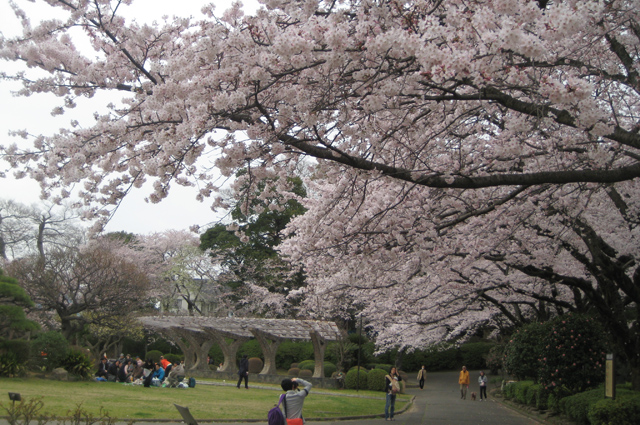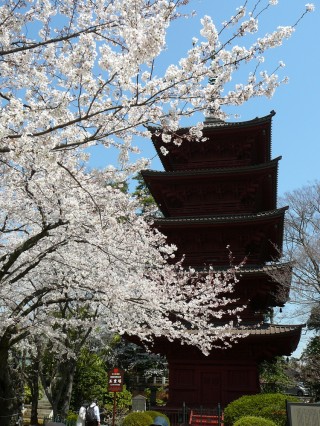Home to many of Chiba’s most serene and charming sites, Ichikawa is steadily emerging onto Tokyoites’ radars. Find out why Tokyo’s next-door neighbor might be the next pitstop for your upcoming hanami picnics and weekend day-trips.
With cherry blossom season fast approaching, you may already be making your hanami plans. While most of us focus on Tokyo’s best known cherry blossom viewing spots for our hanami parties, you would be well rewarded by visiting the neighboring city of Ichikawa, in Chiba Prefecture. Many of us see the city as a bedroom community, or a city that you pass by on the Sobu as you head to the airport, but in fact Ichikawa has a long and vibrant history, as well as a series of picturesque temples, which truly come alive during cherry blossom season. Many literary figures of the past made their home in this city, and you can imagine that they were inspired by the same views that you can see to this day.
One of the most well known of Ichikawa’s temples is Mamasan Guhōji, which was built some 1200 years ago. The long stairway approach to this temple rewards visitors with a stunning view of Fusehime Sakura: the weeping cherry tree. Known as Fusehime Sakura, this living treasure of the temple is believed to be over 400 years old, and blooms earlier than the standard variety sakura. In addition to Fusehime, you can find more than 200 cherry trees as you stroll through the grounds of Mamasan Guhōji. Close by is the Kakumatsujaku Memorial Museum, which has its own impressive stretch of cherry trees.
Stepping off at Keiseinakayama or Shimousanakayama Stations, you will find yourself just footsteps away from the five-story pagoda that marks Hokekyoji. This temple is known for the spectacular blooms of its Yoshino cherry trees, which blossom into impressive tunnels of pink flowers. One of Japan’s most characteristic views, the cherry blossoms look even more ethereally lovely against the backdrop of Hokekyoji’s multitiered tower, which is the only one of its kind in Chiba, and one of only three standing Edo-era pagodas. The temple was built around the year 1260, by Nichiren Shonin, the founder of the Nichiren Buddhist sect, and the treasure room of the temple holds several National Treasures.
Contours of pink lines like the rivulets of a waterfall are the characteristic shape of the weeping cherry tree of Myōgyōji. Like the Fusehime of Guhōji, the weeping cherry tree blooms early, so you should check the cherry blossom forecast closely as hanami season gets closer—an English forecast can be found at www.jnto.go.jp/sakura/eng/index.php. In addition to its sakura, the sculpture on the gate of Myōgyōji is a sight that you shouldn’t miss. Myōgyōji is a 10-minute walk from the Barakinakayama on the Tozai Line.
An abundance of cherry trees can be found outside of Ichikawa’s temples as well. Satomi Park and Sakuradote Park are popular places for families and couples to sit under that briefest of seasonal gifts: the light pink canopies of the cherry blossom.
Thanks to its close proximity to Tokyo, its quiet, small-town feel, and a rich history, Ichikawa offers a unique experience for any hanami fan.
From Tokyo Station, Ichikawa Station is just 18 minutes away on the Sobu Express Line (¥290). Shimousanakayama Station is two stops on the Sobu Local Line from Ichikawa Station, and Keiseinakayama is a local station on the Keisei Main Line.









